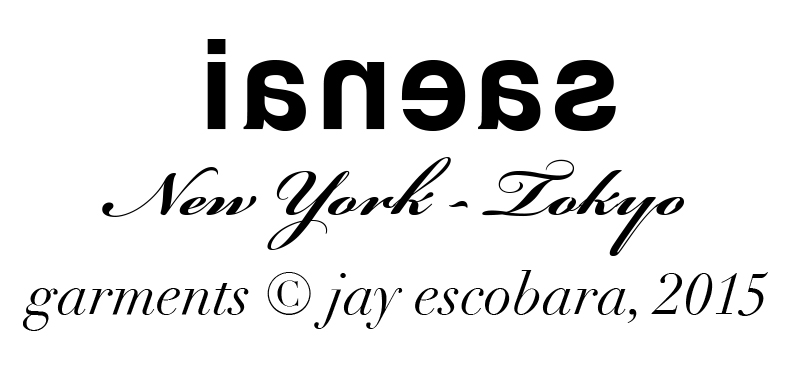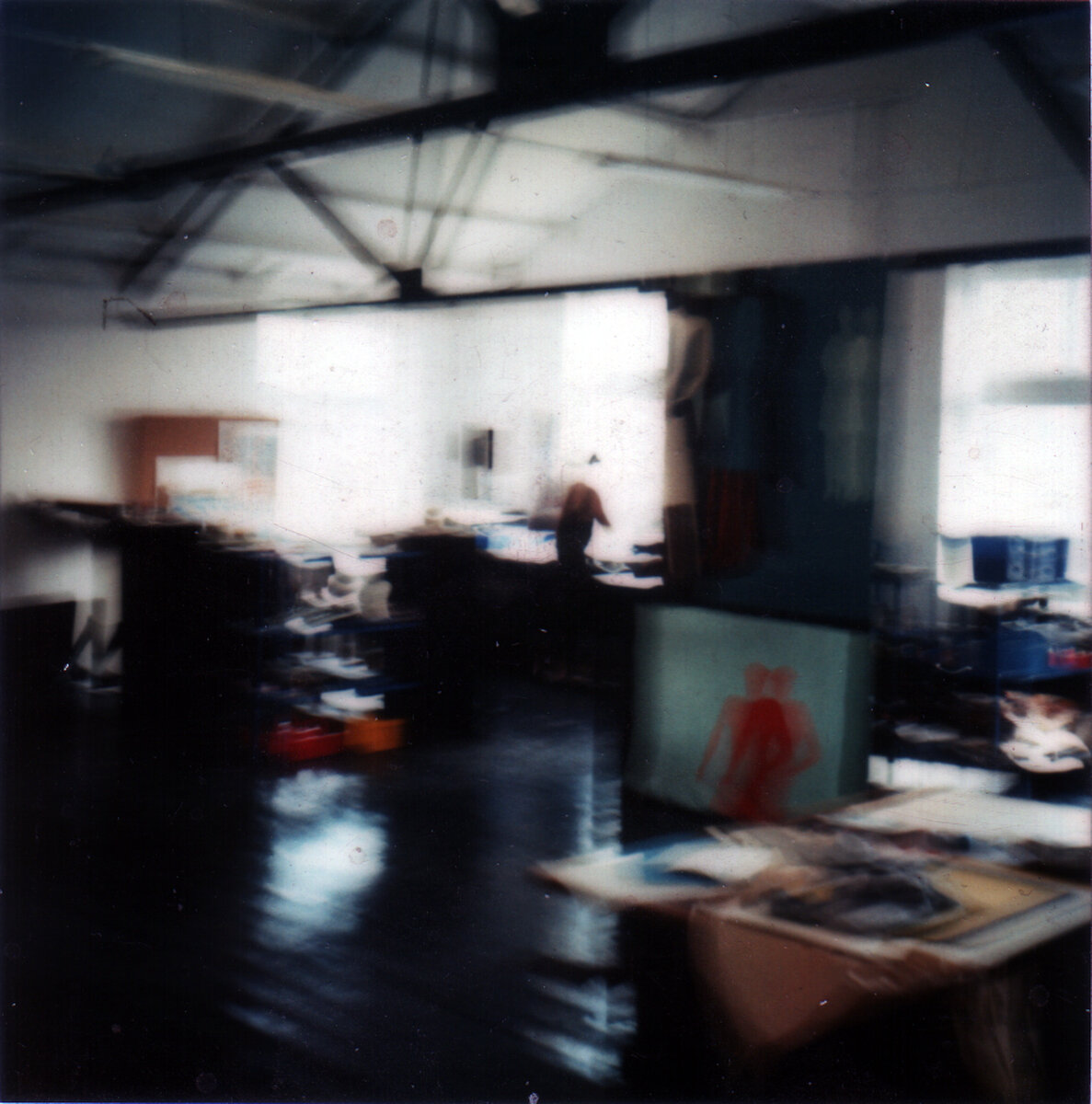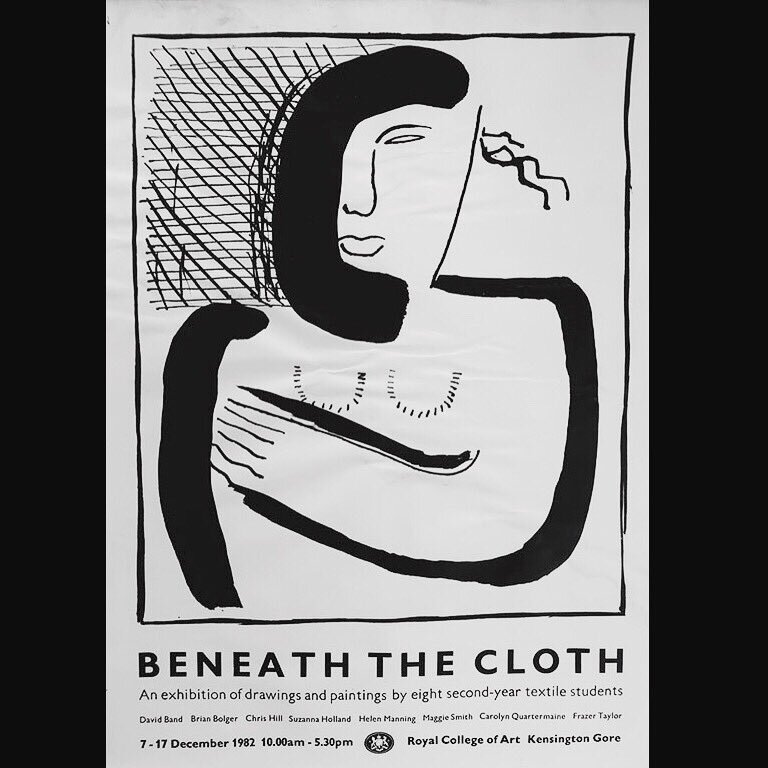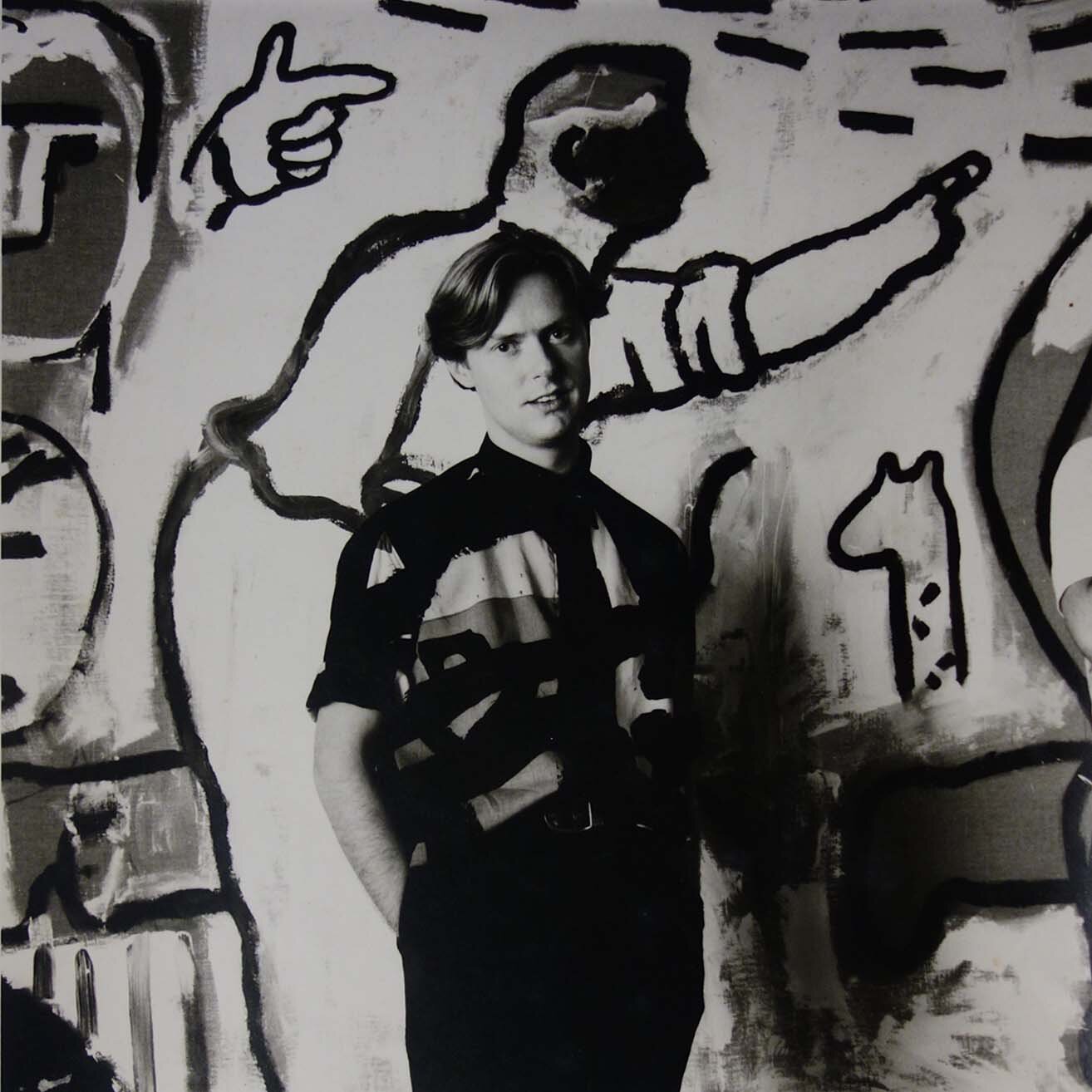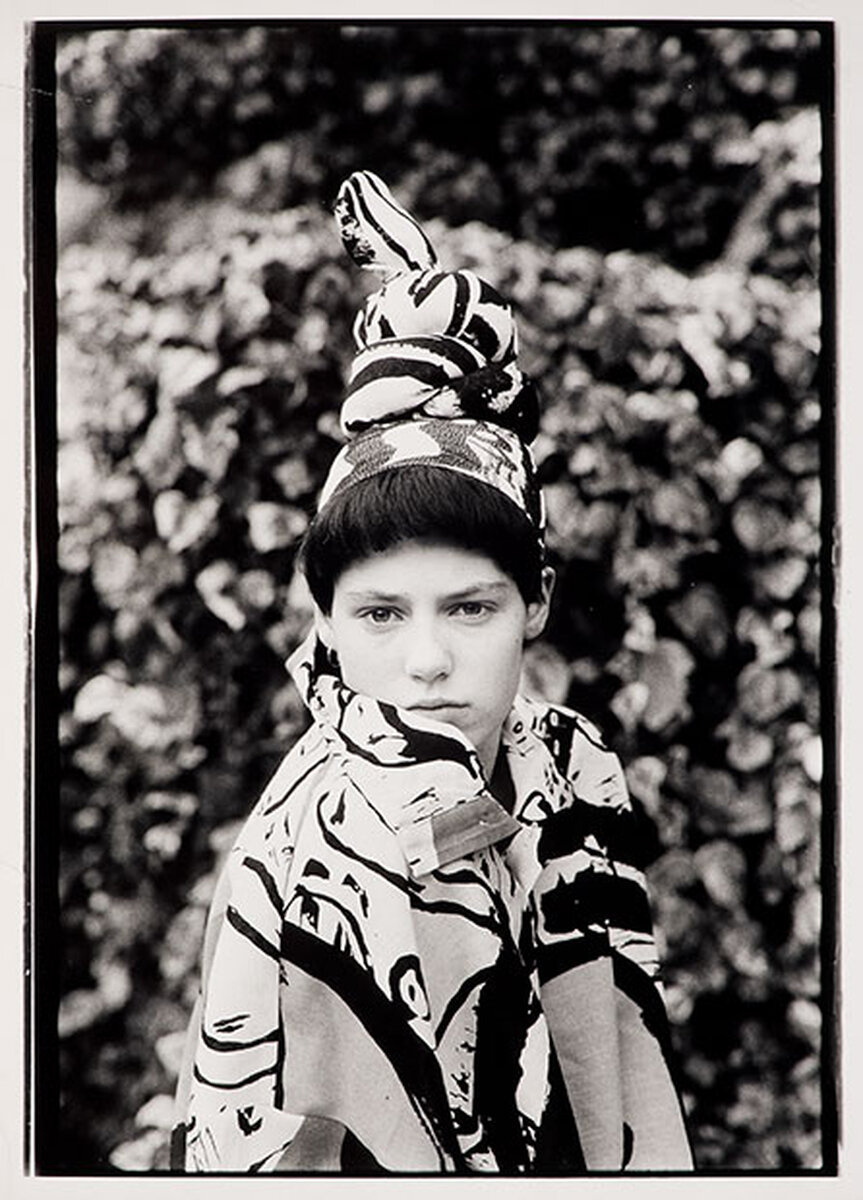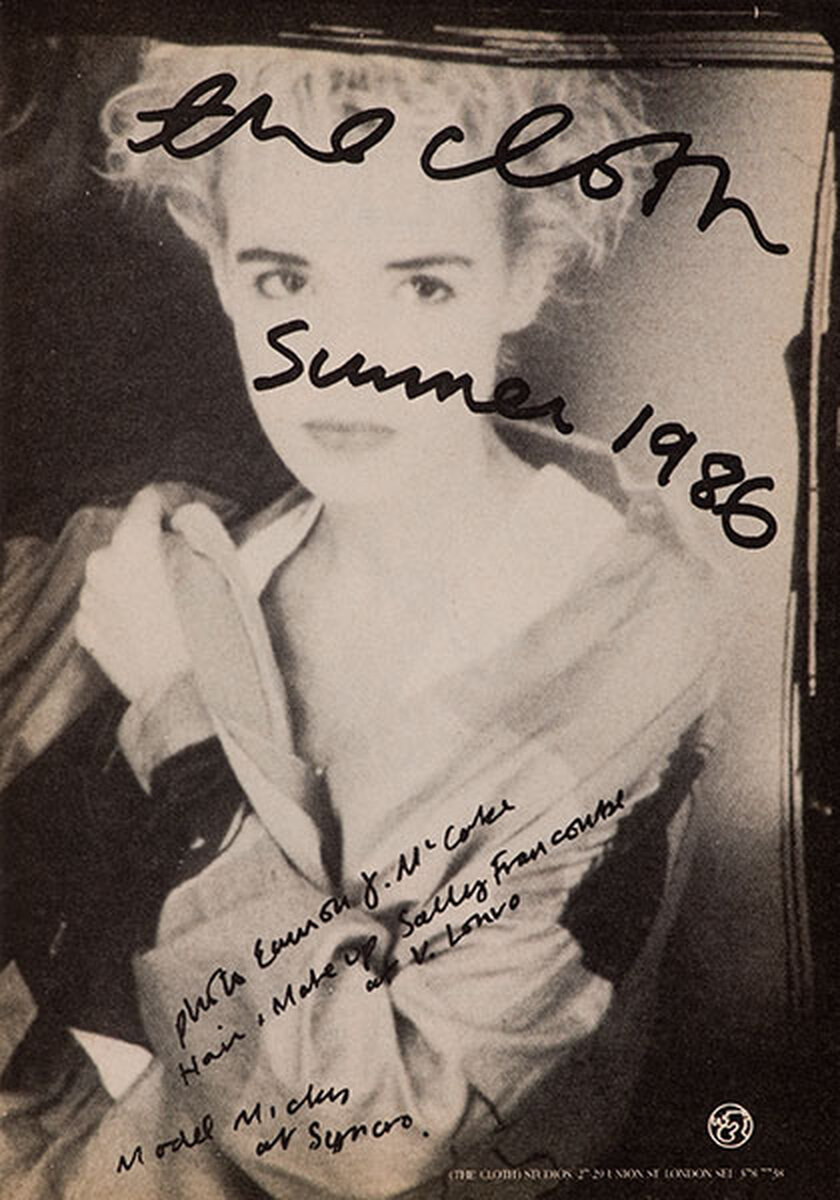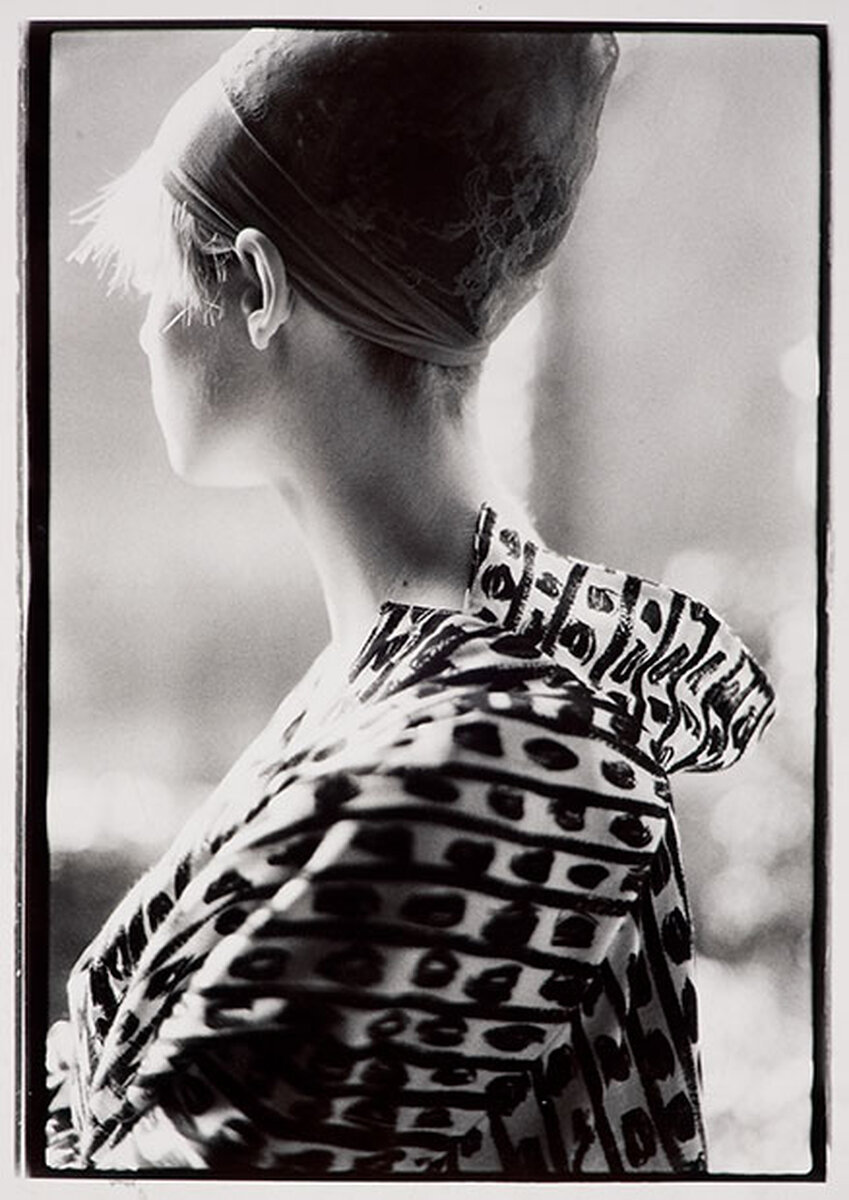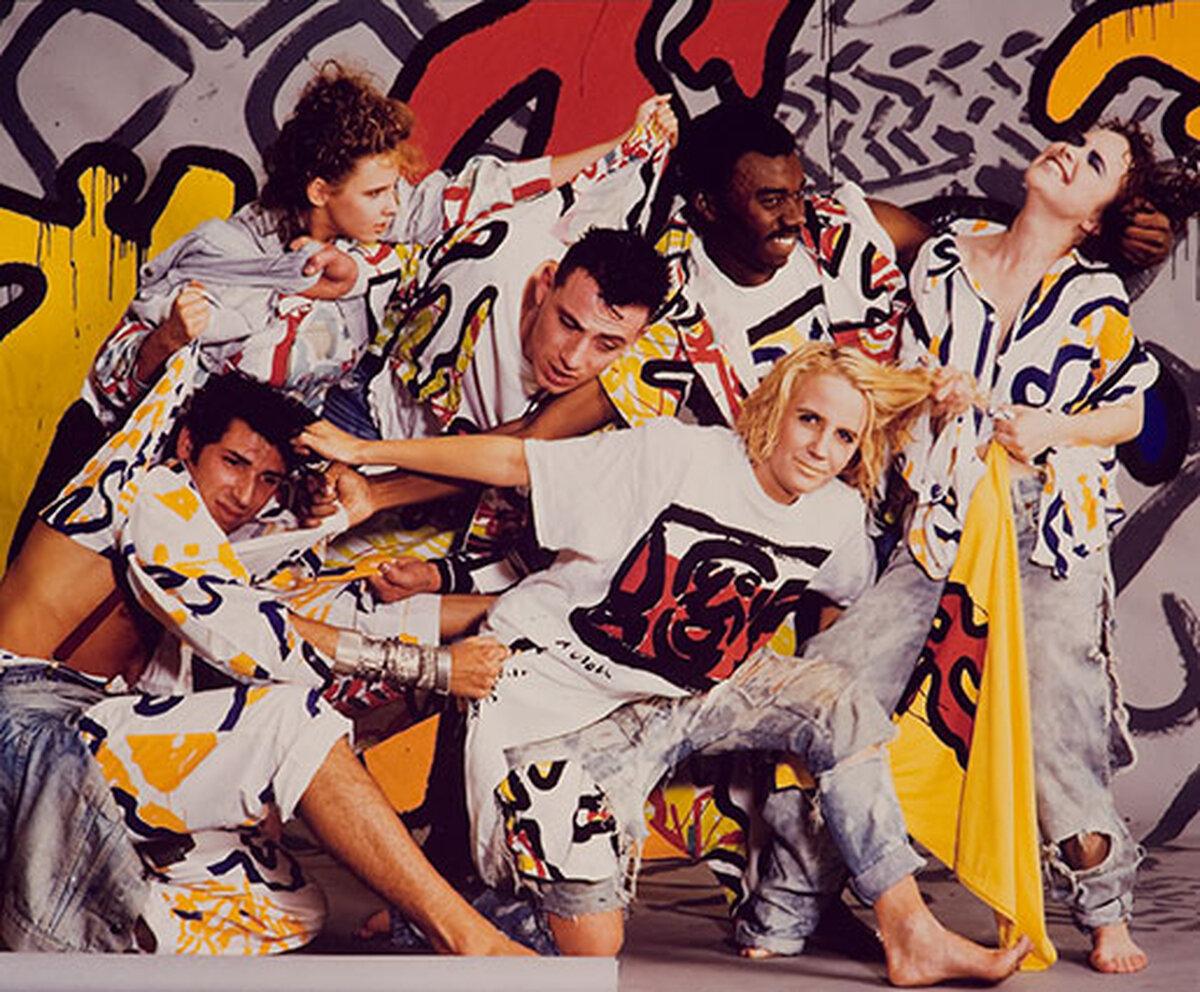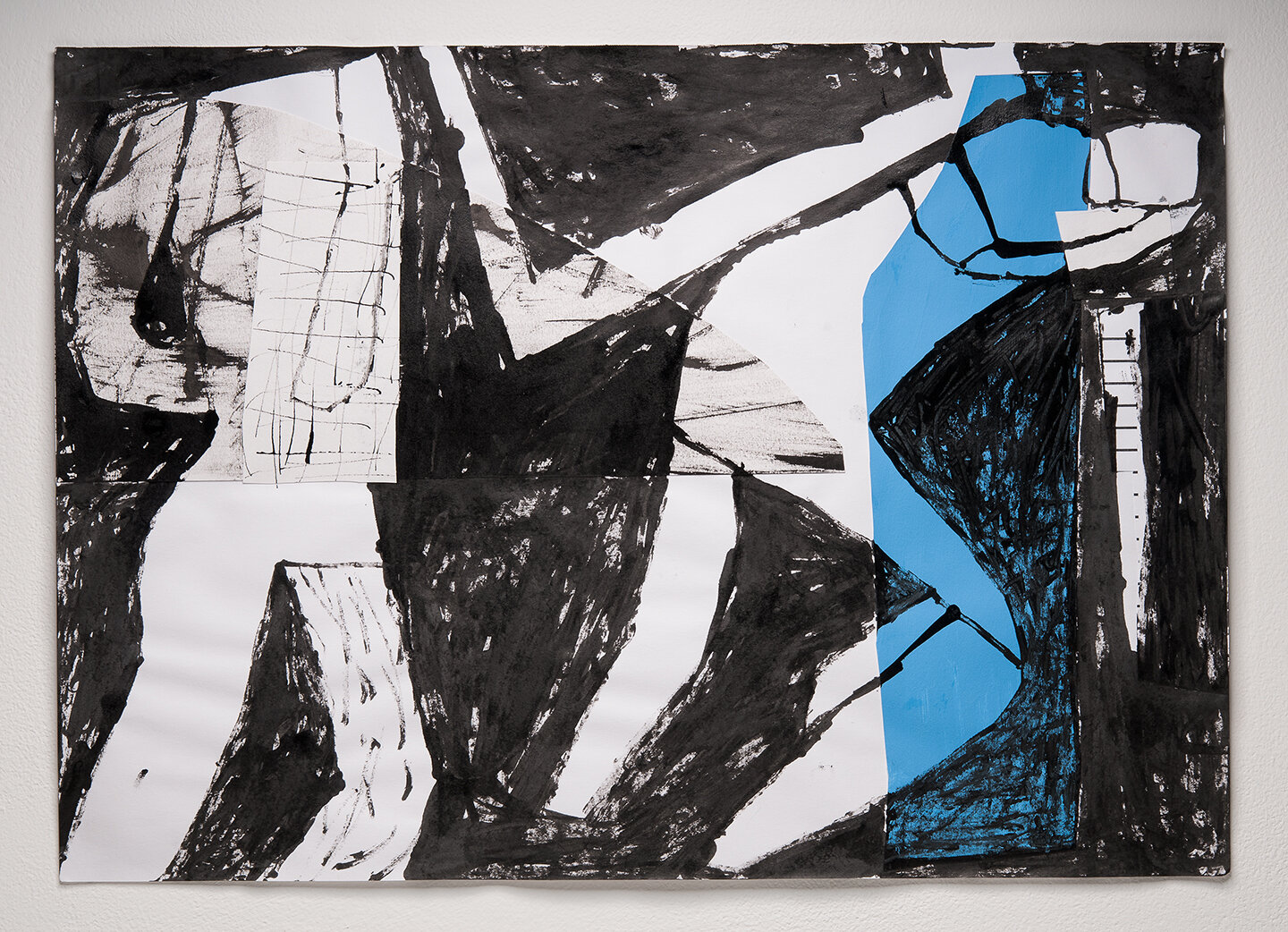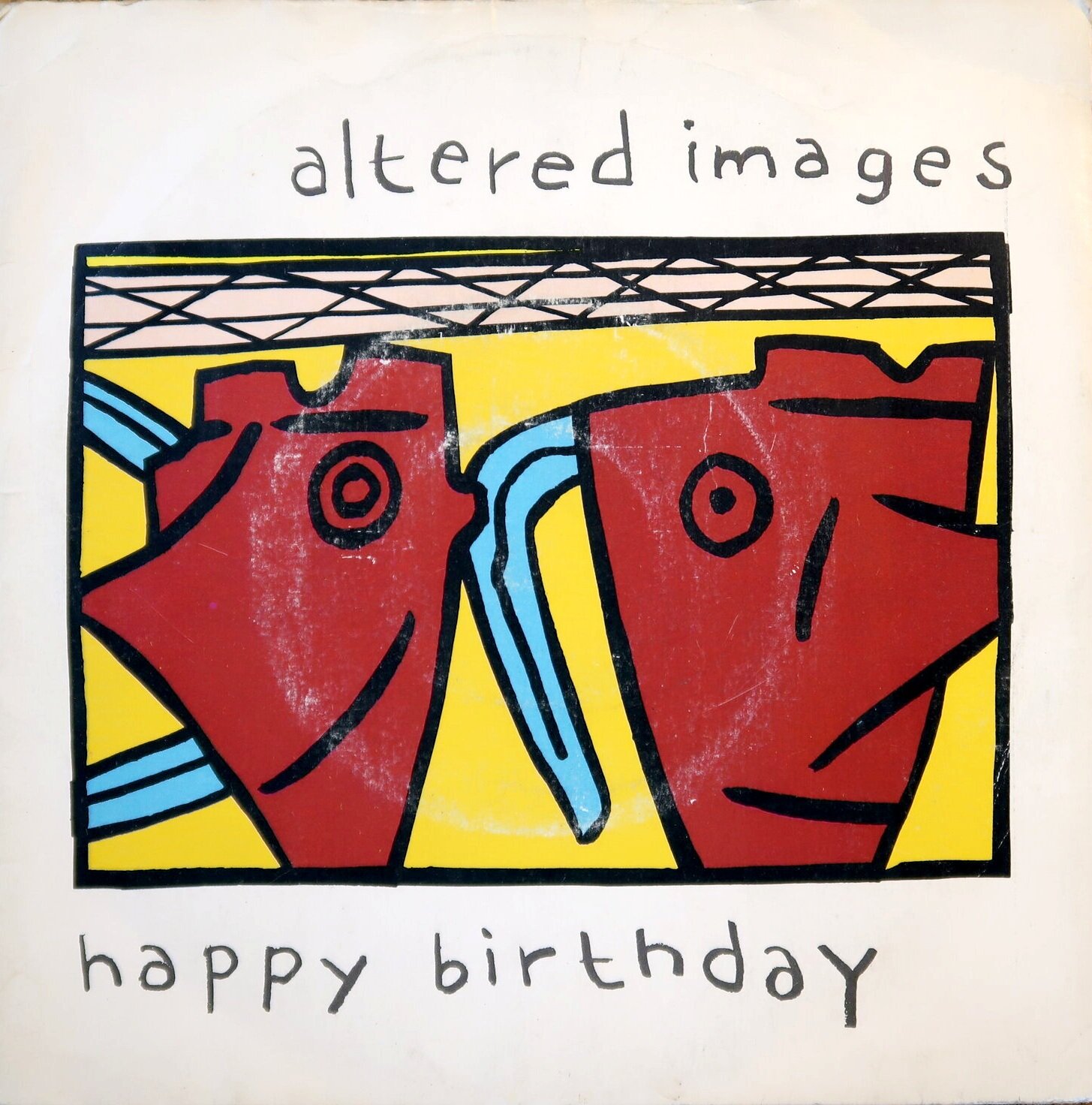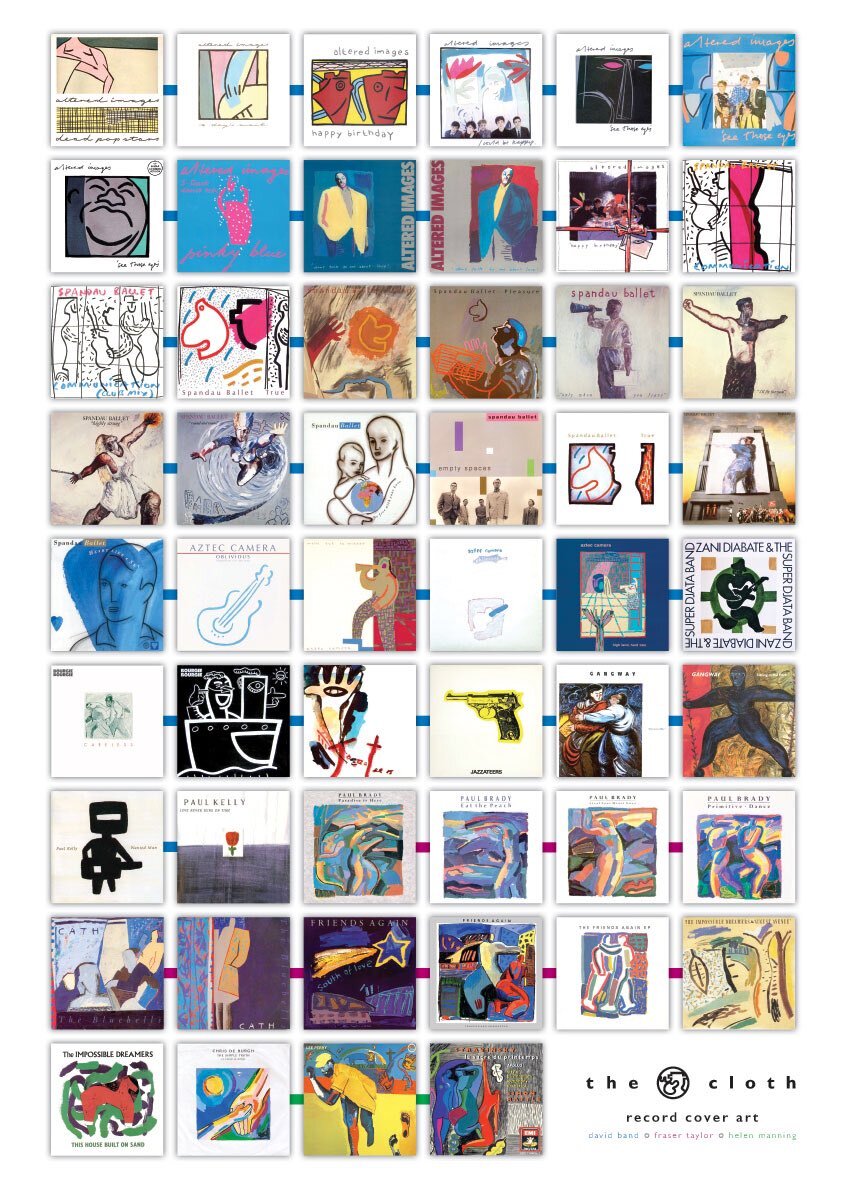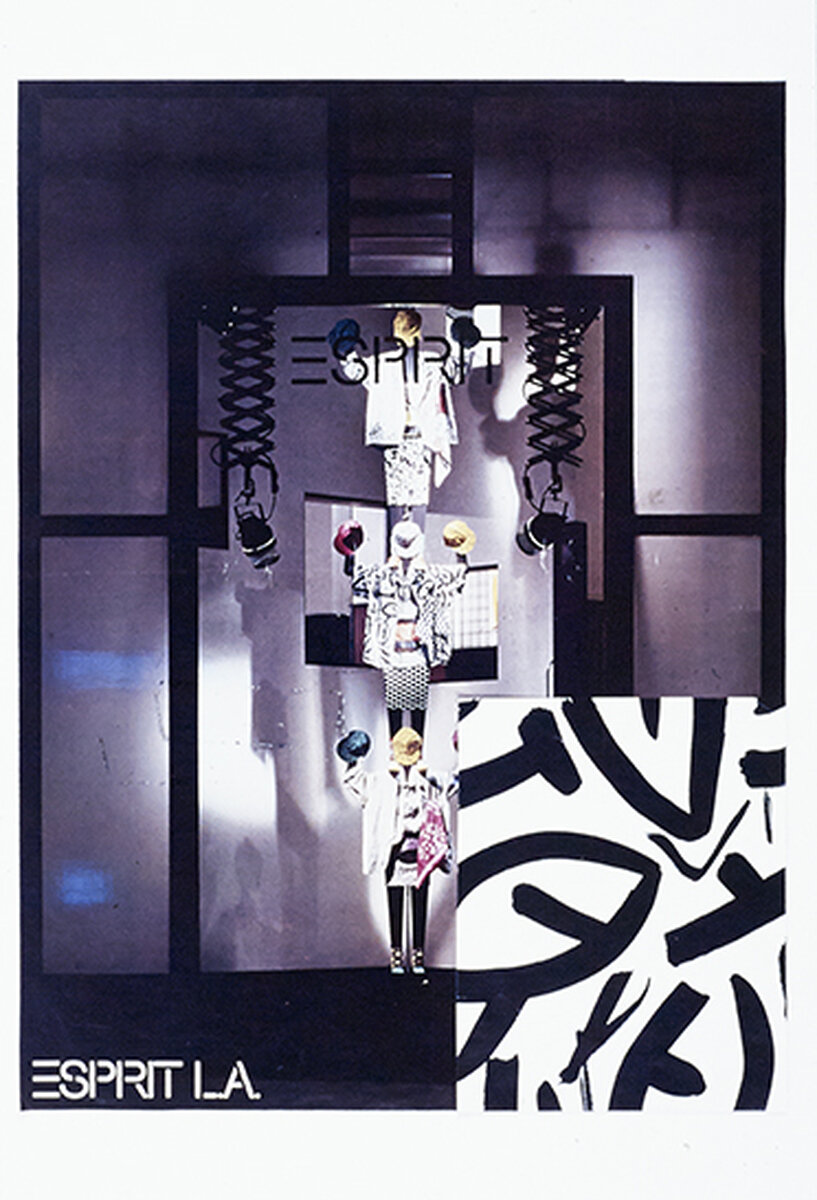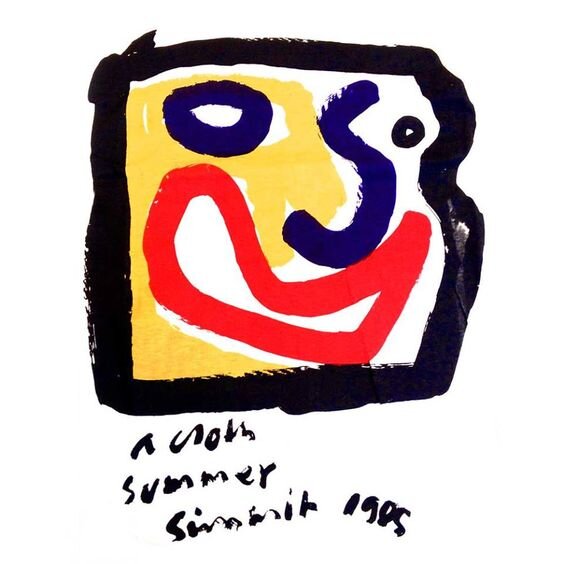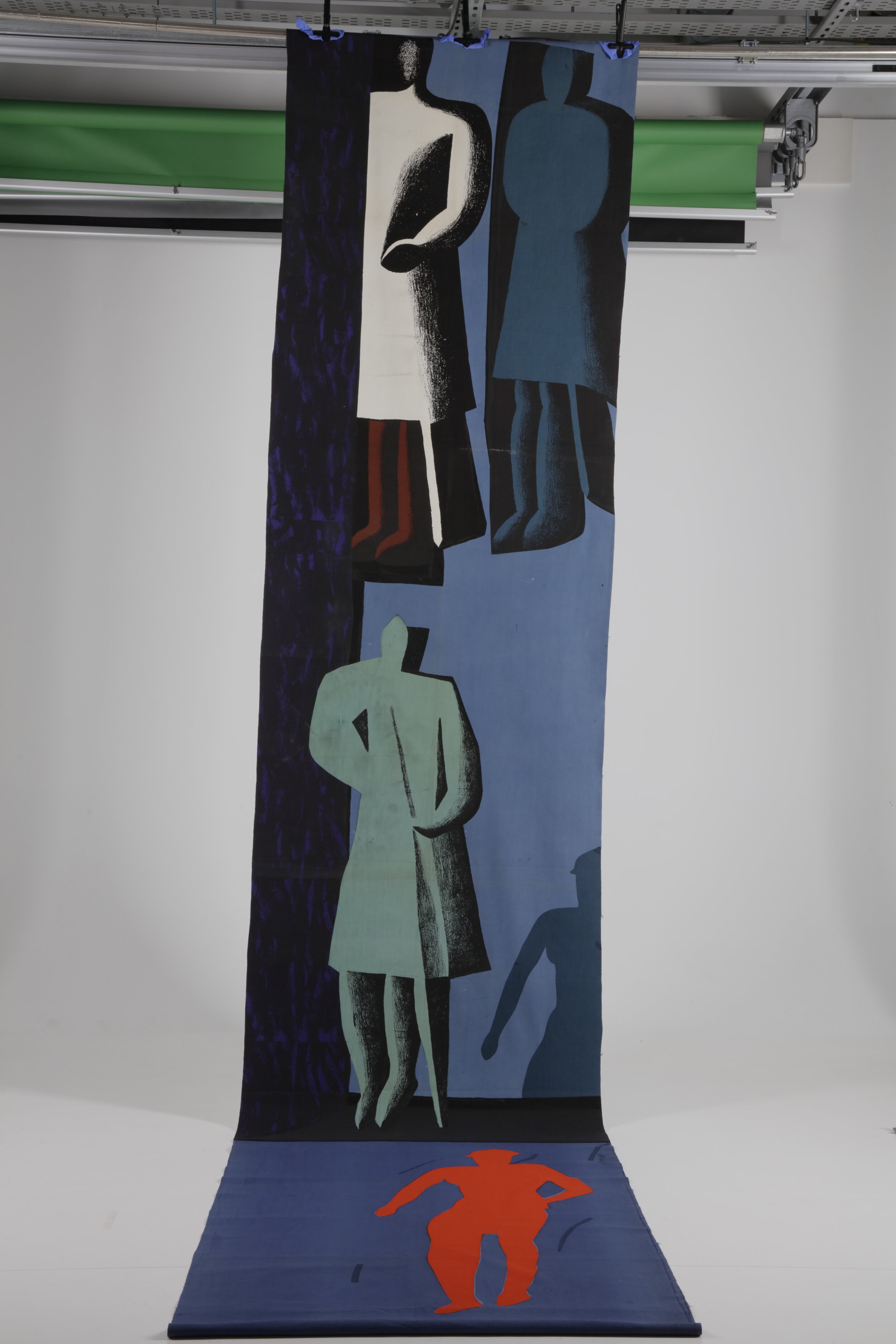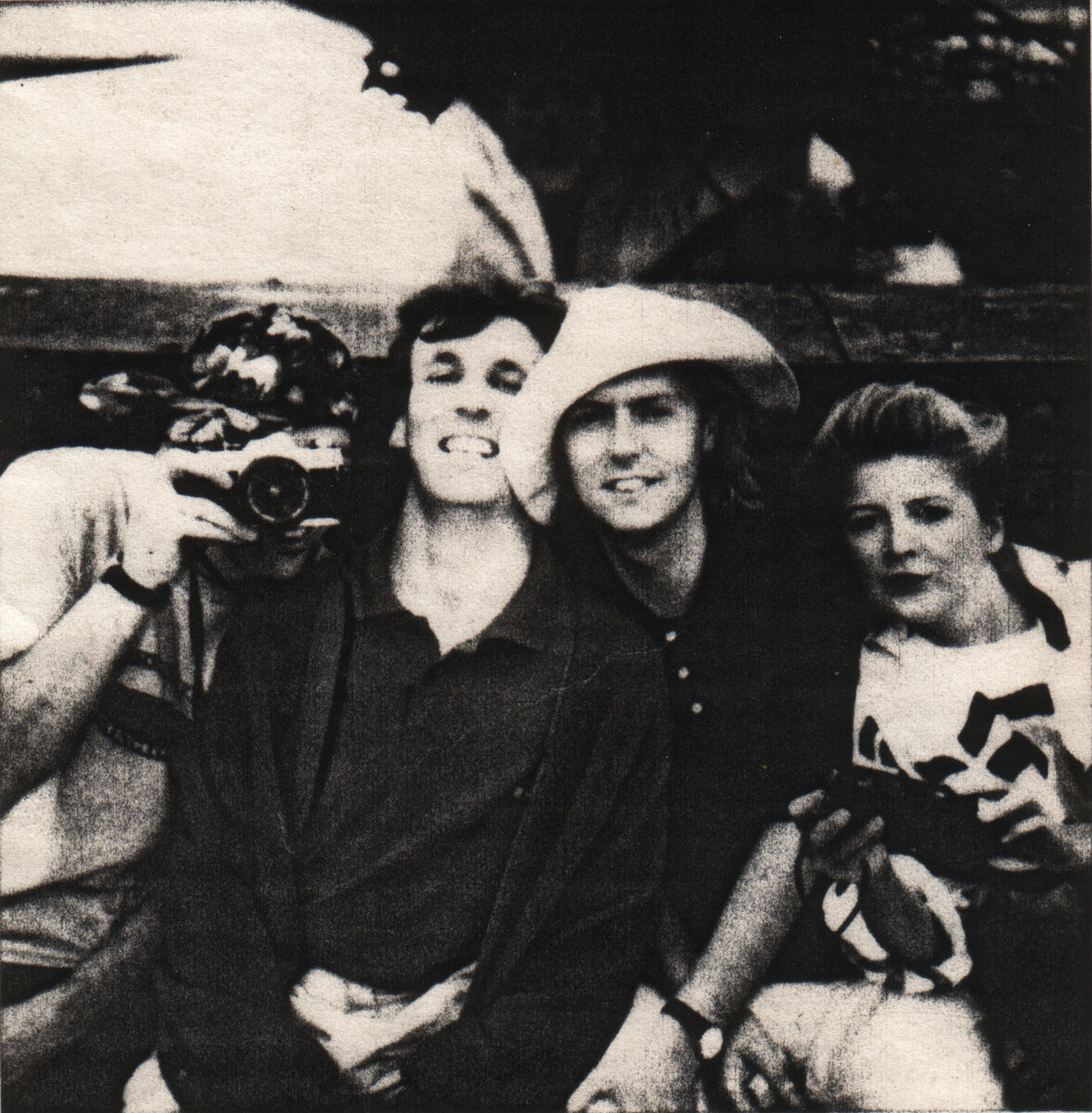The Insiders- c/o Fraser Taylor | The Cloth
THE INSIDER*
c/o Fraser Taylor | The Cloth | United Kingdom
EXPLORING A RARE & BRIEF MOVEMENT IN FASHION AS EXPERIENCED BY ONE OF FOUR MEMBERS OF THE PROLIFIC TEXTILE DESIGN COLLECTIVE, THE CLOTH.
Photograph of Fraser Taylor, c.1983. Courtesy of GSA Archives & Collections, DC 089/3/4/1.
London- Emerging from an era of budding post-punk culture, a new wave sound, depictions of 80’s masculinity and androgyny, and where hyper art visuals appealed to insiders and common folk alike gave way to a gang of four Royal College of Art students with a penchant for painting & textiles to prove groundbreaking efforts under the fashion establishment called, THE CLOTH. Whether Fraser Taylor, David Band, Brian Bolger, and Helen Manning knew their individual efforts would lead to consistent collaboration is unclear, but what is apparent is the residual impact this collective had on fashion, art, music, upon establishing themselves as The Cloth.
I grew up listening to albums that bore their artistic expressions and watched textiles draped perfectly into garments speak visual tongues on the runways in New York and Paris. The value of The Cloth’s work resonated with emerging designers and creatives around the globe and by 1983, the collective were re-defining surface design in a manner rivaled with Ettero Sottsass’ Groupo Memphis.
While under the constraints of quarantine, this interview took a span of 3 weeks via email, tons of digital resources shared, laughs, podcasts, and information. I have had the privileged to gain an outside glimpse into the earlier moments within the collective- as seen through Fraser Taylor- A founding member of the Cloth and the School of the Art Institute of Chicago adjunct professor. Here we go!
{Interviewed by Jay Escobara on June 22nd & June 29th from my home in Los Angeles to Fraser’s in Glasgow}
p.s. Special thanks to my dear friend Moira Taylor whom has made this encounter possible + Check out the album art that David & Fraser designed during UK’s New Wave/New Romantic era.
Jay Escobara: Hey Fraser! Thanks for reaching back to me and taking the time to be apart of this piece and also for sending along the written materials. I really appreciate it. Last Month, I launched a Spring 21’ concept called, Origins. I believe in beginnings because they have so much energy. So I ‘m super glad to catch up with you and ask you a few questions in relation to your beginnings. So, in the spirit of origins, where’s home and what was it like growing up there? Please describe as much as you can- sensory recollections of house, nature, friends, family, early influences, etc.
Fraser Taylor: Hi, I grew up in Kirkintilloch a town north east of Glasgow, the middle child of three. We lived on an estate on the edge of the town very close to the countryside. My parents did not come from creative backgrounds but my Father was aesthetically aware and interested in contemporary design. His hobby was woodwork and when I was very young, he built a boat from scratch in our back yard. I was fascinated by the act of making and I understand this to be my first awareness of materials.
Jay Escobara: Interesting, please expound.
Fraser Taylor: This experience was also heightened by my fascination with touch, enjoying the physicality of surface and texture. Until my mid-teens every weekend and family holiday were spent sailing on Loch Lomond. I have very visceral memories of those years being surrounded by exhilarating landscape and the constant sceptical of colour and changing light. The hue was often grey with slashes of sharp colour. It often rained. The sound of rain for me is oddly reassuring.
Jay Escobara: What were some of your early influences growing up and what music were you listening to back then? Were there works of art (visual, film, literature) that made strong impressions on you?
Fraser Taylor: My early influences were listening to music by Mark Bolan and David Bowie. I was fascinated by the visual and sound. My obsession with both these performers marks the start of an interest in style, inventiveness and things on the periphery. I had a small group of friends who also shared these interests and it became very apparent that we occupied a space that was not conventional.
“My obsession with both these performers marks the start of an interest in style, inventiveness and things on the periphery.”
Jay Escobara: Can you recall the first time you became interested in visual arts? What factors were apart of you making that decision?
Fraser Taylor: I don’t remember ever not being interested in the visual arts. From an early age, I always remember drawing. I felt fixed to observing everything around me and documenting that experience through drawing. Not sure where that interest came from but it has always been there. I recently found a sketchbook that I made in my mid-teens and it was full of drawings of everyday objects and the landscape close to my home. My Father recognised my appetite for drawing and painting and converted the attic in our home into a studio. I can remember climbing up there and spending hours working. I thrived on that solitary practice. At the age of about fifteen I registered for Saturday Morning Classes at the Glasgow School of Art . It was during this time that I became aware of Charles Rennie Mackintosh- who designed the Glasgow School of Art building on Renfrew Street. The building was completed in 1909. It blew me away. Our classes took place in the large painting studios which were magnificent and featured incredible windows and iconic Mackintosh architectural detail. I was hooked!
Jay Escobara: What was the energy like in Glasgow in the late 70's early 80's. What was the youth culture scene like during this period?
Fraser Taylor: In 1977, I went to Glasgow School of Art at the age of seventeen, a very different experience from my education in Kirkintilloch. There was much activity. Punk Rock was in the air and art students were challenging aesthetic norms and it was acceptable and encouraged to express yourself however you needed. Glasgow had amazing music venues including The Apollo. We were able to see incredible stage shows and performances by Iggy Pop, the Ramones and David Bowie and many others. These performances prompted an interest in scale, loving the drama of large painted backdrops superimposed with projected moving image… and then Disco emerged and took over Glasgow club culture, introducing a new bright and shiny aesthetic. There was a fusion between Glasgow’s rising music scene and the art school. Both groups socialised in the same bars and nightclubs- where important friendships and collaborations were forged.
Jay Escobara: There was this New Romantic moment too that was taking off too, right?!
Fraser Taylor: Yes, The New Romantic era surfaced in a few small select London nightclubs in the late 70s. Myself and my flatmate Morag Ross became infatuated by this movement, in particularly the theatrical fashions. We would travel by train to London to attend clubs such as The Blitz and Café de Paris which were synonymous with this trend. Morag and I hosted a club night in Glasgow named Dance Modern in an attempt to encourage a New Romantic culture to grow in Glasgow. Sadly, we failed, and the club only ran for four weeks due to lack of interest. Margaret Thatcher became Prime Minister of the UK in May 1979. This marked the start of great political unrest which impacted education funding cuts and gay rights. There were angry protests and much frustration amongst our generation.
‘Flock of Boots’, summer 1986 advert, The Cloth. Photograph: Eamonn J. McCabe, Hair & Make-up: Sally Francome at V.Lonvo. Model: Mickey at Syncro. Courtesy of GSA Archives & Collections, DC 089/3/4/3/4/9.
Jay Escobara: Thatcher- yes this was an unsettling time, much like today and it seems we (humankind) haven’t learned those core lessons yet. But that’s another subject for a different chapter. At GSA, you met David Band. Who is David and How did you two meet? Was it an instant alliance or a wild combination of sorts that compelled you two to begin creating works together?
Fraser Taylor: I met David Band on my first day at art school. Our work areas were next to each other and he was part of a group of students who bonded very quickly and remained friends during art school and beyond. Why we connected is still something that causes much debate between us. Central to our relationship was a mutual respect and trust. David also did not intend to study printed textiles but he was attracted to the creative urgency and prominence of the department. His ability to make beautiful, contemporary, dynamic work, with a strong graphic aesthetics and uniqueness of style, gripped me… That and he had a rigorous work ethic. He was very involved with Glasgow’s emerging music scene and was interested in connecting communities out with the art school. I was drawn to his entrepreneurial approach and his rigorous work ethic. After Glasgow we both moved to London to study at the Royal College of Art. Our shared interests in developing our visual language became stronger during our two years at the RCA.
Jay Escobara: Got it. David was known for being an extrovert and through his socialising brought about many creative opportunities. In those moments you also were working through many projects- How were you managing the workflow, Royal College of Art, youthful mischief-making, and exposing yourself to culture at that time?
Fraser Taylor: David in particular had a solid understanding of the importance of meeting and engaging with others with different skills and experiences. I do look back on those days and wonder how I found the time and energy to do everything that we did. We worked hard and played hard and the two things were intermingled and of equal importance. I was young, eager, and very curious. I functioned on very little sleep. I am not sure if it was adrenalin or the excitement that kept me going. Investigating the culture of London was such an eye opener and a thrill. I also spent hours in The British Museum, the Victoria and Albert Museum, and the Tate Gallery looking and drawing, drawing images that would later be employed in my textiles
Jay Escobara: Right! Because you were doing art direction for bands like the Bluebells and David was working with Altered Images and Spandau Ballet. Individually, everyone was doing amazing work independent of The Cloth- Brian’s collage abstract work and Helen's mixed media painting- How often did the side projects everyone was working on influence the seasonal collections at The Cloth?
Fraser Taylor: Our independent projects were the focal influence for The Cloth’s projects whether textiles, fashion, illustration or graphics. Painting was at the core of that. These works formed our visual research and motivation. We had a separate messy studio, a space designated for painting and experimentation. We all understood and supported the importance of that practice. The paintings and exhibition program were the force behind the design work. Painting was a singular experience and central in allowing us to express our own vision. David and I did at times collaborate on paintings together which were presented at the Thumb Gallery, London, in an exhibition titled ‘Objects of Desire’.
Jay Escobara: Was there a single deciding factor that made David, Helen, Brian, and yourself form The Cloth? What were some of those important factors that advanced it’s formation?
Fraser Taylor: We came together as a group as we had many shared interests. There was no single deciding factor that created the impetus to establish The Cloth. Our work moved between abstraction and figuration and had a sharp graphic aesthetic. We shared an interest in colour and scale and although we were all trained as printed textile designers. We wanted our work to expand beyond and engage in other disciplines and working together rather than in competition with each other seemed obvious. We were very close as a group- as friends and advocates for each other. We liked each other.
“Our work moved between abstraction and figuration and had a sharp graphic aesthetic.”
- Fraser Taylor
'Log and Loggerie' collection by The Cloth, Autumn/Winter 1985. Photographer: Andrew MacPherson. Stylist: Joe McKenna. Courtesy of GSA Archives & Collections, DC 089/3/4/3/4.
Jay Escobara: Playing on the idea of building each other up and having that bond- were there any contributions, yours included, that impacted the direction of the collective?
Fraser Taylor: I feel creatively we all had the same strengths. I would say that David stood out as he had a particular and unique ability to work graphically. He understood typography. Looking back, I feel one of my contributions was that I had an understanding of the overall vision of The Cloth and had a practical and realistic idea of how things could function and happen. I also took on the role of working closely with Lynne Franks our PR Company and Fashion Sales Division. We all organically found our place and responsibilities.
Jay Escobara: Brilliant! That’s amazing when that happens…When you can find ones way within a structure and realise new responsibilities. It definitely seems that everyone came to the table with really strong ideas/concepts and very passionate about the direction of the collective. So what was the process like in establishing seasonal textiles and new works. Was it more assigned by project or collaborative?
Fraser Taylor: It was not about individual ownership it was about the look of the overall collection and how we contributed equally. We produced five print collections a year each comprising two hundred designs. We worked solidly together in the studio for approximately five days to create these. One thing that still amazes me about our collaborative process was that when we were working on our printed textile design collections, it truly was collaborative in every sense of the word. We developed ideas and themes together and also at times physically worked on the same designs. Designs were painted, drawn, collaged on paper, and laid out on the floor in groups. The energy was ferocious. We had complete conviction and belief in each other’s hand. When working on commissioned textile designs the process was sometimes different. For example, Brian designed exclusively for Betty Jackson.
Jay Escobara: Yes! I love the work Brian did for Betty Jackson- Very energetic! The Cloth eventually made it’s way to the united states. You had already established yourselves with names such as Nicole Miller and Calvin Klein…and Andy Warhol. Who were some of your favourite clients what was the experience like to travel abroad with your vision?
Fraser Taylor: We quickly shifted our attention to the United States I would say in the summer of 1984. Once in New York we realised how vast the industry was and we promptly committed to five sales trips a year. Our first client was Nicole Miller who we worked with for many seasons. We loved working with Nicole and quickly she introduced us to an amazing social scene. Other favourites were Calvin Klein, Saks Fifth Avenue, Fenn Wright Manson, Liz Claiborne and textile convertors called, Concord Fabrics. Those selling trips were intense with many appointments in one day. It was not unheard of to stay in one building for the entire day, jumping in and out of elevators to attend appointments on different floors. It was fast paced and hard to stay attentive. We did a few trips to California, on one occasion to work with Esprit!
Jay Escobara: You also worked in Paris too, there was Yves Saint Laurent. What was that experience like?
Fraser Taylor: We designed textiles for high fashion designers such a Yves Saint Laurent and Jean Muir through Liberty London Fabrics. Liberty Design Studio provided us with concepts driven by the designer’s requests and we produced ideas for them to review, select from, which we then developed. This was an exciting collaboration as the quality of fabrics was always beautiful. Our first textile sales trip was to Paris it was challenging for many reasons. New York by far was the most inspirational and remained the focus of our interest for the majority of The Cloth’s existence. The sheer density and range of creativity and cultural extremes was mind blowing. NY in the early to mid 80s was an incredible time to be there. The fusion of art, fashion, and club culture was so raw and exciting and reflected similar ideas that were going on in London but on a much larger more dramatic scale. NY exposed us to many significant artists including Keith Haring who was a major inspiration. We loved that he was exhibiting at global blue-chip galleries and also had a shop in Soho called the Pop Shop selling his t-shirts. He was interested in both ends of the market which I feel was also one of The Cloth’s ambitions. In 1987, Brian and I visited Tokyo to launch our home furnishing collection. Very different to NY, Tokyo had a very distinct aesthetic which in contrast was clean, minimal and also exhilarating.
Jay Escobara: At the height of the collective, was there a lot of difficulty responding to the demand of new prints, artwork, & layouts? And was this demand part of the reason The Cloth concluded in 1988?
Fraser Taylor: Actually, The Cloth disbanded in 1987. Yes, the demand and expectation of The Cloth accelerated quickly and was a challenge to manage with such a small team. To assist us we employed a studio manager and a fashion designer who also organized production. When we were receiving production and shipping orders out to stores it was crazy busy and very stressful. It was all hands-on deck and sometimes hard to shift our heads from designing to extreme physical administration. Our own individual careers as artists also put pressure on our design output. We were being pushed and pulled in all directions. In the beginning that pressure was quite exciting but then wore off. Towards the end we shifted our attention from fashion to designing home furnishings as the fashion industry was moving its focus away from print. That involved putting yet another structure in place. All these components contributed to concluding The Cloth. That decision was hard but allowed us as individuals to pursue our own creative interests.
Jay Escobara: Since the early Cloth days in 1983, each one of you brought extreme talent to the collective. After The Cloth concluded, what was the process for you in redefining yourself as an artist? What were some concepts, individually, that each of you would embark upon next?
Fraser Taylor: I did not anticipate the difficulty of suddenly being an individual and not having the support of the group or having the financial security of The Cloth. The transition from being involved in many strands of activity to something much more singular was tough. The next few years were a challenge finding a strategy to reposition myself. I initially moved into a shared studio with two other artists/illustrators and continued to work on a few commercial projects. I eventually moved to a studio on my own in Deptford, south east London. I focused on painting, producing work for exhibition. I needed solitude to develop my ideas. I returned to drawing, working from observations of the body and landscape, building an inventory of images to employ in my paintings. I gained representation from Jill George Gallery, London shortly after graduating from the RCA. This relationship continued for many years providing opportunities to exhibit nationally and participate in International Art Fairs.
Jay Escobara: And also, you’re an adjunct professor at the art institute of chicago which is a very acclaimed institution for art & design. So, it seems like the perseverance paid off! Today, Are the members of the cloth still in close contact with each other?
Fraser Taylor: I am in contact with Brian and Helen who both live in London. Unfortunately, we have not collaborated on projects since 1987. Their friendship and support are greatly valued. Notably and Tragically David passed away in 2011 leaving behind his partner Fiona and their son Alfie. David and I continued to collaborate together after the demise of The Cloth. I went on many occasions to Melbourne where he was based and well established. We worked together on fine art print projects which were sometimes commissioned and in other cases the outcome was less defined. Our relationship was quite astonishing as we had so much respect and appreciation for one another. Our communication was consistent, sharing ideas and concerns over the years. On my last trip to see David he was very ill and he asked me to help him complete the work he was making for an exhibition. That was such an honour and privilege and a vivid memory that I greatly value.
Jay Escobara: Yes, I can only imagine- what a loss indeed. Mr. band’s work has had an impact on myself and have always appreciated how he was able to bring high art values to a format appreciated by many new minds and creatives. Speaking of new creatives, you donated your archive of work from Glasgow School of Art (GSA), Royal College of Art (RCA), and the Cloth to GSA- which was once a starting point for you. The GSA did a tremendous job archiving and keeping a digital record of the works/contributions over the years.
Fraser Taylor: I donated a large body of work produced from 1977–1987 to Glasgow School of Art’s Archives and Collections in May 2014. It was delivered to the Archive which was located in the basement of the Charles Rennie Mackintosh-designed building. a few days after, it tragically went on fire. None of the work was destroyed but some items were impacted by water damage. The Archivists have been working closely with The Scottish Conservation Studio to stabilise the damage. The University of Glasgow center for Textile Conservation have also recently carried out a project washing t-shirts designed and produced by The Cloth. Both teams have done an amazing job preserving the items and it has been fascinating for me to view my work through the lens of conservators. There’s also a project by GSA lecturer, Helena Briit, surrounding the collection, funded by the Leverhulme Trust.
Jay Escobara: Fraser, Thank you for your time and patience with me over the weeks. I am happy to have worked together on this piece & for the readers, I’m happy to share this aspect of history with my readers, creatives, and alike. Cheers!
CREDITS: Polaroid of The Cloth studio, c. 1986. Courtesy of GSA Archives & Collections, DC 089/3/4/1/24. | Art on your sleeve, episode 10, The Cloth podcast - https://lnns.co/4BADTaXiwZP | Leverhulme Trust project Instagram - @thecloth80s. | GSA Archives & Collections - https://gsaarchives.net/ | ‘Beneath the cloth’ exhibition poster, RCA, December 1982. Courtesy of GSA Archives & Collections, DC 089/3/3 .
Special thanks to Helena Britt for her support and commitment to this article.
